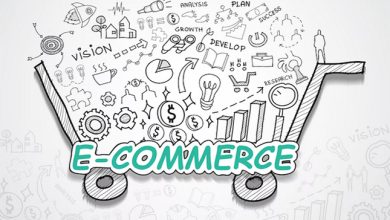
Customer value is the perceived value of a product or service. Here’s a simple guide on how companies can boost their value to enhance the customer experience and increase satisfaction.
When you think about “customer value,” what immediately comes to mind? Consider the importance of customer value beyond just offering competitive prices for high-quality products.
Today’s consumers are interested in more than just price or quality. Customers also expect the product or service they purchase to address a specific issue or fulfill a need. Given the abundance of shopping options available to them, buyers are seeking companies that consistently provide value.
Customers appreciate a company that simplifies their lives and enhances their overall well-being. The customers firmly believe that the advantages of their purchase outweigh the price, and they will continue to support the company with their ongoing patronage.
What is Customer Value?
Customer value is the perceived value of a product or service. It represents the total expenses and advantages linked to a product or service. Some examples to consider are the price, quality, and the individual’s benefits of the product or service. Consumers consider various costs, including monetary, time, energy, and emotional, when assessing a purchase’s value.
How is customer value created?
Customer value extends beyond monetary considerations. Usually, it is generated by the solution offered by a product or service, benefiting the buyer and their organization. Remember that customer value can vary from person to person. The price of your product or service is the same for every customer, ensuring fairness and consistency. However, the value will vary for each buyer due to numerous factors, such as customer experience.
For example, imagine you have an e-commerce platform where businesses can easily list their items for sale. You acquire two new clients—a large online corporation and a small local business traditionally operated from a physical store. Both companies have the exact cost. However, a new e-commerce site may not significantly impact the corporation’s business. Going online could significantly boost sales for the mom-and-pop store. Therefore, the corporation will find your company’s value substantially greater than theirs.
In the same way, if you sell software to multiple companies, the value of your customers will be greater for a business that depends on your product to operate all of its departments compared to a business that only uses your product in one department.
Why is customer value important?
Customer satisfaction is crucial for building lasting connections with clients and securing their continued support. Understanding and meeting customers’ needs and expectations as they evolve over time is crucial. Understanding customer sentiment is essential for fostering loyalty and maximizing customer lifetime value.
Providing excellent service enhances the value for customers.
1. Companies that provide customers with their preferred option for contacting customer service are more likely to increase customer spending.
2. Most customers are likelier to spend more with companies that provide personalized customer service.
3. Most business leaders believe that customer service plays a crucial role in driving their company’s growth.
4. A majority of business leaders believe that it enhances customer retention.
5. A large percentage of business leaders have experienced a boost in their cross-selling capabilities as a result of providing excellent customer service.
How do we measure customer value?
1. Ask customers a small set of questions
Establish direct communication channels with your customers to track customer value effectively. Inquire about how your business delivers value and how it can sustain this in the future. Companies often collect customer feedback through email surveys or direct phone calls.
Start by creating a concise list of questions to assess your value. For instance, you can inquire about customers’ experiences with your product or service and how it contributed to their goals. Additionally, you can seek suggestions on how your company can enhance its offerings and deliver greater value.
2. Determine customer benefits and customer costs
In addition to asking qualitative questions, it is also essential to ask quantitative questions to assess the worth of your products or services. You can gauge perceived value by asking buyers to rate their satisfaction with their purchase on a scale of 1 to 5. Next, you can calculate the average numerical rating to assess if your company is providing excellent value.
After receiving feedback, compile a list of how your team provides or fails to provide customer value.
3. Determine if the benefits outweigh the costs
Finally, you can evaluate whether the advantages (convenience, quality, and brand reputation) are worth more than the drawbacks (price, time investment, and emotional stress). Measuring your customer value may require time and effort, but the insights you’ll gain will be precious.
The formula for calculating customer value
Here’s a simple formula to calculate customer value. Customer value is determined by subtracting total customer costs from total customer benefits. It’s a simple and concise equation.
Total Customer Benefits — Total Customer Costs = Customer Value
Subtract the total customer costs from the total customer benefits. There are two main types of customer benefits: product and service value and service experience value. There are various types of customer benefits, such as social value, personal value, and psychological value. To determine if certain benefits outweigh certain costs, assigning a metric to the different types of benefits and costs is essential. This will help in evaluating the qualitative aspects of benefits and costs. For instance, many studies have found that customer service is more valuable than price.
The benefits and costs may differ depending on the requirements of a particular customer group. Segmenting your customer base can be made easier with customer personas, journey maps, and support data.
How Your Business Can Generate Customer Value
It is crucial to take action based on the feedback received. Valuing customer feedback demonstrates a genuine concern for buyers and a dedication to delivering a positive experience, ultimately leading to higher satisfaction levels. Therefore, use feedback to pinpoint areas for improvement and develop a strategy for delivering increased value. Here are some things you might need to do:
1. Personalize your support interactions
Using a repetitive script during customer support calls can leave a less-than-favorable impression on your customers. Ensure each customer receives a personalized support experience that caters to their specific requirements, allowing you to demonstrate your value. This adds the benefit of making customers feel more valued, fostering greater brand loyalty.
2. Provide multichannel support options
Offer assistance through multiple channels, including email, phone, live chat, and messaging, to ensure customers can contact you through their preferred platforms. Identify the channels your target audience frequently utilizes and ensure that you incorporate them into your strategy.
For a more seamless customer experience, take it up a notch by linking conversations across all your channels. Here’s a simple explanation of omnichannel support.
3. Create a robust onboarding program
Create a thorough onboarding guide to ensure a smooth start for customers. If feasible, assign a dedicated support agent to each account to assist stakeholders with product implementation. This agent can conduct multiple onboarding meetings with your customers, ensuring their comfort and optimal product usage.
To ensure smooth and efficient support for your products, it is recommended that you assign a dedicated customer success associate to each account. This individual should possess specialized expertise regarding the product and should act as a consistent resource for strategic advice. Consistent check-ins, sharing best practices, and fostering a genuine partnership with clients are essential.
4. Prioritize customer success
Support teams are crucial in addressing customer issues and technical problems, while customer success teams are equally vital in ensuring customer satisfaction. Customer success managers proactively anticipate their client’s needs and assist them in achieving their long-term goals with a company’s products or services instead of simply addressing problems as they arise.
With a team of dedicated staff members focused on customer success, it becomes simpler to deliver personalized experiences, boost customer retention, and identify potential cross-selling and upselling opportunities. However, it is essential to use customer data to stay updated on their evolving needs and find ways to address them effectively. Consider using data analytics to identify trends and pinpoint common issues, developing a comprehensive knowledge base to address frequently asked questions, or investing in a CRM system to track your customer statistics over time.
5. Address patterns in support issues
Proactively address issues to ensure customer satisfaction and avoid complaints.
Success managers must communicate any customer issues they encounter to the support team. This way, everyone can work together to find solutions. It’s essential to collect customer feedback and data regularly to gain better visibility into recurring issues and take action to resolve them.
6. Make sure customers know you’ve heard them
You may have already sent out surveys and taken action based on customer feedback to make improvements. Additionally, make sure to reach out to customers who provided input to inform them about how their feedback has been integrated. (You can do this through email or text message.) It’s great news that you’ve listened to and implemented your customers’ ideas and suggestions to bring about positive changes. Furthermore, it demonstrates your dedication to prioritizing your customers throughout their journey, enhancing your overall value.
7. Find opportunities to surprise and delight
Customer retention in 2021 is focused on surpassing expectations and fostering long-term relationships with your customers. Ensure your brand’s value is consistently demonstrated by providing an exceptional support experience.
Build a solid, lasting relationship with customers by consistently seeking opportunities to impress them. For instance, you can give your support team the flexibility to provide a limited number of discounts per month or surprise customers with complimentary gifts, enabling them to exceed customer expectations. It would help if you offered fast and simple solutions, self-help support, multiple customer service channels, and personalized experiences. These are all crucial elements of a customer retention strategy.
Retaining employees is crucial for any company’s long-term success and financial health. Research conducted by Bain & Company has shown that even a small increase of 5 percent in customer retention rates can significantly impact profits, potentially boosting them by up to 95 percent. It is more cost-effective to prioritize your current customers rather than focusing primarily on acquiring new ones. Retaining an existing customer is significantly less expensive than acquiring a new one, with the cost ranging from five to 25 times higher for new customer acquisition.
8. Recognize and incentivize customer loyalty
Customers enjoy feeling acknowledged and valued. Reward your dedicated customers by offering them a discount or promotion after they receive support. Alternatively, consider implementing a loyalty rewards program to demonstrate your appreciation.
A customer loyalty program allows customers to receive discounts or freebies once they meet specific criteria, such as being a customer for a year or reaching a particular spending threshold. Consider Sephora as an example. Customers enrolled in the company’s Beauty Insider rewards program earn points for each dollar they spend. Users can redeem their points for gifts.
Customers who remain loyal are rewarded for their continued support, strengthening their connection to the business and providing them with unique benefits that set us apart from competitors. When developing a loyalty program, it is essential to select rewards that captivate your target audience. Please pay attention to your customers and allow them to lead the way.
9. Give your customers a sense of community
It’s always nice to feel connected to a community. Create a customer community forum to foster a strong connection with your brand. This forum will provide buyers with product support, Q&As, and a platform to share feedback. You can integrate this forum into your website or social media page. Additionally, it can be used as a self-service option for customers as part of your overall support strategy.
Online forums foster a strong sense of community by linking users with shared needs and interests. Customers often feel more supported by the brand, increasing your value. In addition, allowing forum users to share their knowledge or expertise can lead to them becoming long-term brand advocates.
Use community forum software to create a thriving online community for your product or service. The solution alleviates your agents’ workload and enhances customer engagement.
Creating Customer Value for long-term success
Many individuals gauge a business’s success based on its sales figures. However, it is important to also consider another aspect when evaluating a company’s long-term success: the post-purchase customer experience.




